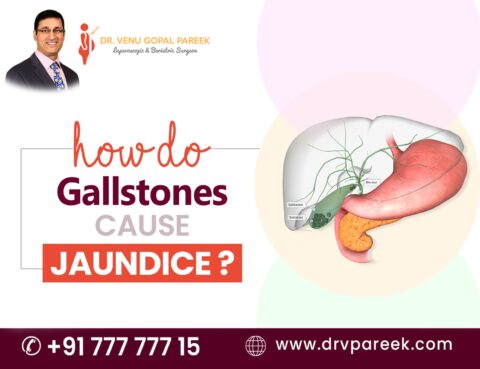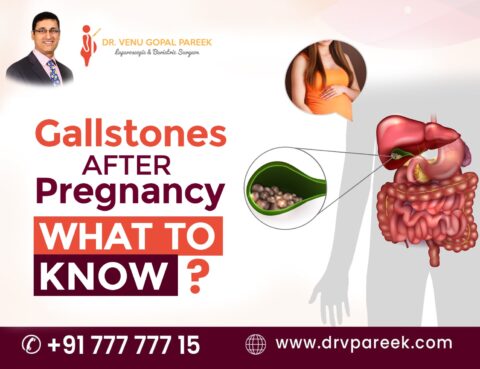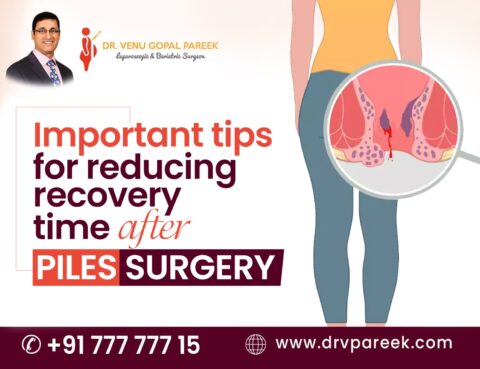
Obesity is a global health concern, affecting millions of people around the world. The main problem with obesity is its potential to develop various health complications. In general, obesity is defined as the accumulation of excessive fat in the body , which, over time, can compromise our overall well-being. Some of the complications related to…

Thyroid surgery is a complex procedure. However, choosing an experienced and skilled thyroid surgeon can improve the success and recovery following the surgery. The thyroid is an important gland in the human body that is located in the neck. Its shape looks like a butterfly, and it lies just below Adam’s apple. This gland produces…

There might be many possible causes for developing an unusual lump in the abdomen area, which include hematoma (collection of blood), lipoma (collection of fatty tissue), lymph nodes, tumors, hernias, etc. So, yes, a hernia could be one of the common causes of such a lump, which can develop anywhere near the navel, groin area,…

Hernias and acid reflux are two different health conditions. However, both are related because certain types of hernias can result in acid reflux. Generally, a hernia is defined as an organ or tissue protruding through a weak spot of the surrounding muscle or connective tissue around it. Hernias are different types, and they affect various…

Jaundice is a condition caused by the buildup of high levels of bilirubin in the bloodstream. The primary symptom of this condition is that the skin, eyes, and top layer of the skin become yellow. Gallstones are one of the many things that can cause jaundice. In this article, let’s understand how gallstones may result…

Obesity has turned out to be a major global health concern because it can lead to many chronic health problems, like type-2 diabetes, heart disease, infertility, joint disorders, etc. For people having a hard time with severe obesity, bariatric surgery has become the most effective weight loss option and improves overall health. This is because…

A hernia is a medical problem that develops in people of any age. It is defined as a bulge or a protrusion of internal organs through a weak area in the muscle wall. Hernias are commonly developed in the groin and abdominal areas. They often appear over the years, and most people have them as…

The thyroid is a butterfly-shaped gland. It is located in your neck, just below Adam’s apple. This gland is at risk of several disorders that affect millions of people all around the world. Thyroid disorders are more commonly observed in women compared to men. Most thyroid disorders can be effectively managed with prescribed medication and…

Yes, obesity is one of the risk factors that may result in the formation of hernias. Excess weight, especially in the abdominal area, puts high pressure on the abdominal wall, making the wall weak and increasing the risk of developing hernia. Obesity is a condition where too much fat accumulates in your body to the…

Hernias are common medical problems that affect people of any age. A hernia is a visible bulge under your skin that happens when an organ or tissue pushes through a layer of weakened muscle, and they are commonly observed in the abdominal area. Even minor hernias can also cause some level of discomfort or pain,…

The formation of gallstones is common during and after pregnancy. Gallstone formation after pregnancy is also called postpartum cholecystitis. Hormonal changes, such as an increase in progesterone and estrogen levels in the gallbladder, might be the main cause of this. Sudden weight loss following the baby’s delivery might also play a role. Gallstones are usually…

A hernia occurs when a part of your intestine or other abdominal tissues protrudes through a weak muscle layer in your abdominal area. Pregnant women are at high risk of getting hernias due to the elevated pressure on the abdomen at the time of pregnancy. Most pregnant women experience external hernias, which means that they…

Hernias are of different types, and it might be hard to believe that nearly 2% of people in the world are affected by hernia at some point in their lives. A hernia occurs when tissue and inner body parts bulge out due to weak muscle walls in certain locations of the body. Compared to women,…

Piles or Hemorrhoids is a painful condition that can affect anyone at any stage of life. This is a common health problem and is caused when blood vessels in the anus (butthole) become enlarged or swollen. This condition is not life-threatening but can cause uncomfortable symptoms like anal pain and bleeding. Therefore, getting proper treatment…

The fact that many of us don’t know is that traditional Indian treatment methods like yoga and Ayurveda can be highly beneficial for patients who have undergone bariatric and hernia surgeries. They aid in quicker recovery and long-term health maintenance post-surgery. However, these healthy practices should be integrated into daily life, as suggested by a…